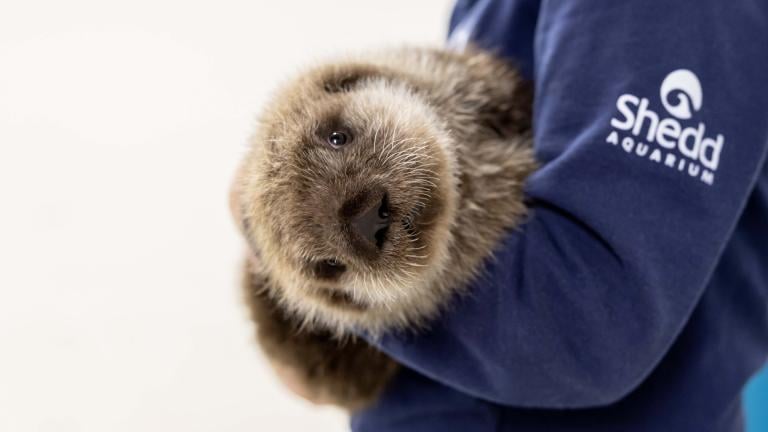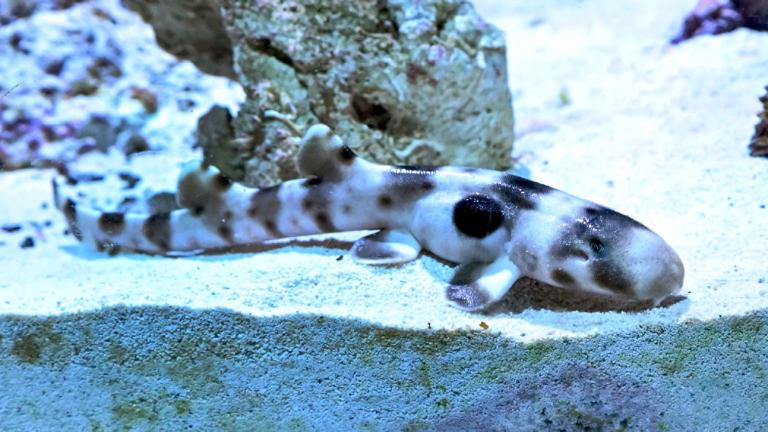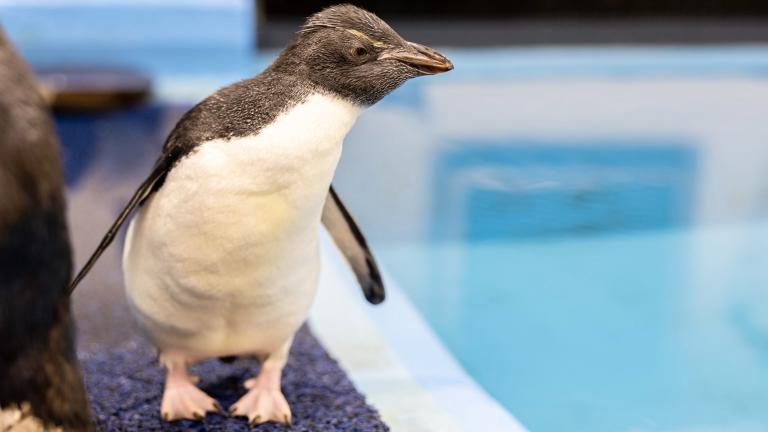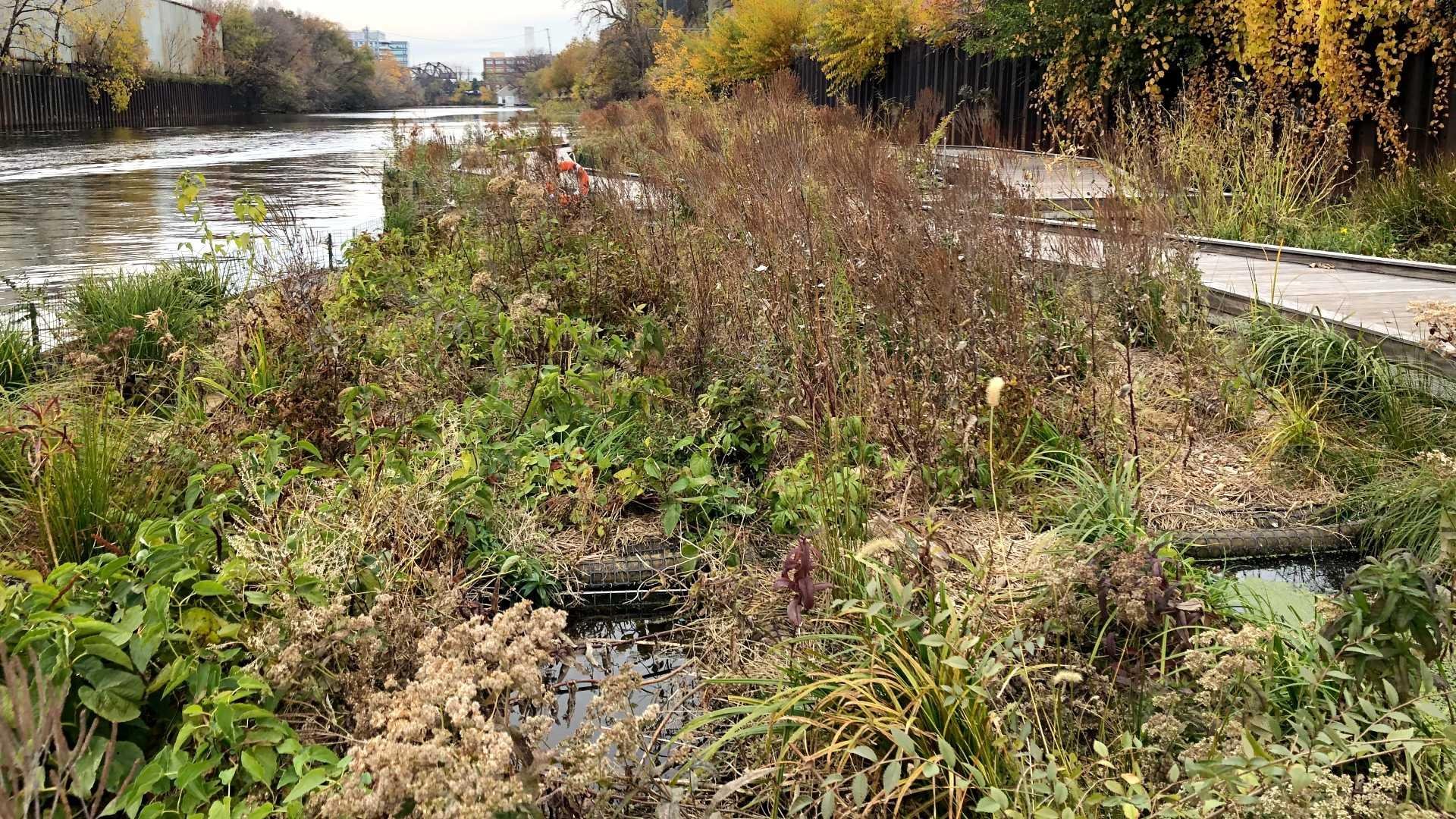 The Wild Mile floating wetland in the Chicago River, October 2022. (Patty Wetli / WTTW News)
The Wild Mile floating wetland in the Chicago River, October 2022. (Patty Wetli / WTTW News)
Chicago may be unique in having reversed its river’s flow, but in terms of corralling and despoiling a waterway, it has plenty of company among cities around the globe.
Now, as the pendulum has swung away from treating these channels like dumping grounds for human and industrial waste, the challenge has become how to clean up and revitalize urban rivers within the confines of what they’ve become, not what they were.
The pre-settlement Chicago River once sluggishly meandered through the region’s wetlands but it has long since been straightened beyond recognition and contained between walls of concrete and steel, often with no transition between hardscape and water.
“You’re never going to be able to remove the seawall and rip rap. Trying to get back to the original state, that’s never going to happen. It’s unattainable,” said Phil Nicodemus, research director at Urban Rivers. “We have a seriously degraded system.”
The solution Urban Rivers, in partnership with Shedd Aquarium, has hit upon is the concept of floating wetlands — life rafts of habitat anchored within the river, currently positioned on the North Branch at Goose Island (the Wild Mile) and the South Branch at Bubbly Creek.
Boston and Baltimore are testing these manmade islands as well, in the Charleston River and Inner Harbor, respectively. The idea is to create a corridor for wildlife by mimicking wetlands where full-blown natural restoration isn’t feasible.
Does it work?
With the installations in Chicago, Boston and Baltimore having reached maturity, the time was ripe to investigate that question.
Nicodemus and Austin Happel, a research biologist at Shedd Aquarium, teamed with their East Coast counterparts on a research study, the results of which were just published in a scientific journal. Bottom line: They confirmed the floating wetlands can improve water quality, provide valuable habitat and reflect improving ecological quality.
Because the three sites are located in vastly different water environments — from freshwater to marine — and incorporate different plants, an apples-to-apples comparison of most data wasn’t possible. But the researchers did find common ground in examining phosphorous uptake, meaning the ability of the floating wetland plants to remove phosphorous from the water.
“We were interesting in seeing how the different plants responded,” Nicodemus said. One interesting discovery, he said, was that Chicago’s more floristic plants pulled up a higher concentration of phosphorus than Baltimore’s grasses.
These preliminary findings provide a baseline of sort for future studies. As cities move from small pilot projects to larger scale installations — Baltimore is about to go from 400 square feet to 16,000 — researchers are keen to see if greater size equates to bigger ecological benefits, and if so, whether there’s a point at where those benefits max out.
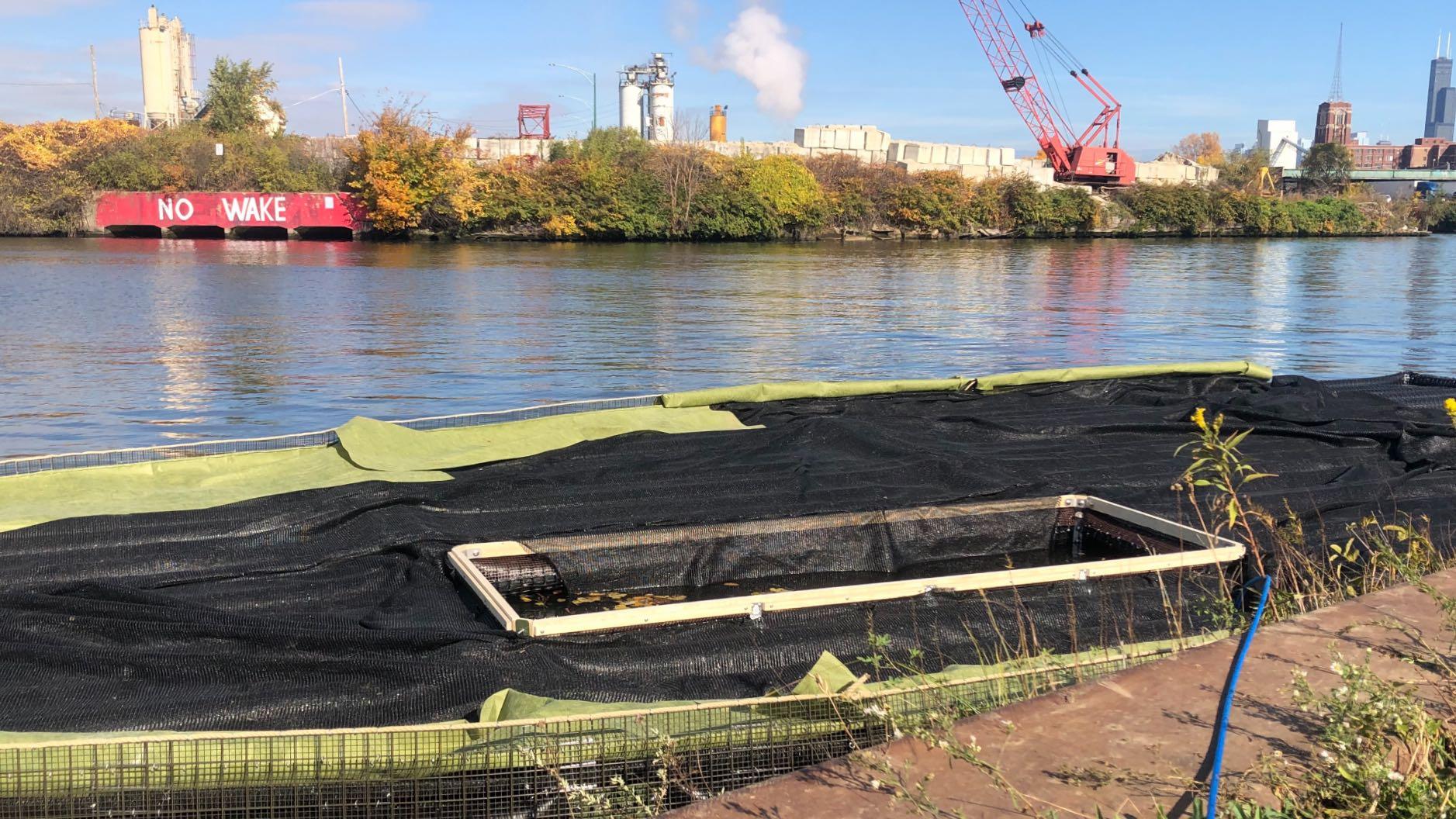 Floating wetland under construction in fall 2022 at Bubbly Creek. (Patty Wetli / WTTW News)
Floating wetland under construction in fall 2022 at Bubbly Creek. (Patty Wetli / WTTW News)
Apart from phosphorus, Nicodemus and Happel also looked at data more specific to Chicago.
One discovery: more zooplankton were discovered in traps near the floating wetlands, Happel said.
These aquatic microorganisms are a key indicator species, because they respond quickly to poor or good water quality, he explained. They’re also an important link in the aquatic food chain, dining on algae and being eaten themselves by fish.
“They were either attracted to hide in the roots (of wetland plants) or they may find things to eat on the roots,” said Happel.
He was also pleased to note an increase in minnow species near the wetlands, because it can take fish time to find and use the floating habitat.
Going forward, “it will be interesting to see if it’s time or the scale of the installation that matters,” Happel said.
On the flip side, he said, one of the most exciting developments was the decrease in non-native common carp in the area around the wetlands.
The carp are troublesome because they tend to disrupt the bottom of the river, he said, wiping out the eggs of other fish spawn that spawn in the silt.
“I’m not sure why” the carp steer clear of the wetlands, “but it’s nice to see them pushed away,” said Happel.
As more cities build out floating wetlands and Chicago continues to add to its array — Urban Rivers plans to double the Wild Mile and is eyeballing a third location near the confluence of the river and the North Shore Channel — Happel expects each finding will lead to more research.
Take the increase in minnows, he said. “Do we start to see more herons and more turtles,” which feed on the fish? Or, how do birds and pollinators interact with the plantings?
“Now that we’re seeing things on a micro-scale, there’s an opportunity to zoom out to the larger river,” Happel said.
Contact Patty Wetli: @pattywetli | (773) 509-5623 | [email protected]




